INTRODUCTION
|
| Mobile Ad-hoc Networks (MANETs) is a continuously self configuring, infrastructure-less network of mobile devices connected without wires. Many research works have been carried out in the field of MANETs routing protocols [1]. Major applications of MANETs include disaster relief operations, military purpose, conferencing and environment sensing. MANETs uses radio frequency technology that allows maximum mobility to the user, this is because of the absence of physical cables. MANET does not require any infrastructure or any central administration communication. Each device in MANET is free to move independently in any direction, and will therefore change its link to other devices frequently. Each node must forward traffic unrelated to its own use and therefore be a router. |
| Communication between two nodes requires a stable and efficient routing protocol for a standard error free connection. Since nodes in the network move more frequently, the topology of the network keeps changing which leads to frequent disconnection between nodes. |
| Routing protocols are categorized into two types, first is reactive or on demand routing protocol and another is proactive or table driven routing protocol. Table driven routing creates a routing table that contains entry to every node in the network. The nodes update the routing table on a timely basis and recalculate the distance to all nodes. Example of proactive routing is DSDV approach [2]. In reactive routing method, a route between source and destination is calculated whenever a connection is required. Examples of reactive method include DSR [3] and AODV approaches [4]. |
II. RELATED WORK
|
| Various approaches were proposed in the literature in the field of routing in MANETs. Some of the approaches are summarized in the following section. |
| In Signal strength based routing protocol for mobile ad hoc network [5]; the node calculates the signal strength of the neighbour node and sends a route request to that node. After the neighbour node or intermediate node accepts that request the node compares the signal strength value of the link with Route Request packet, if the value is less then it changes the packet value with minimum value and forward it to other nodes in the network. This process repeats until the request reaches the destination node. Destination node on receiving this packet will reply back with Route Reply message to the source node. Source node selects the fastest established path to forward packets and later switches to strongest signal strength path for transmission. |
| Next in the literature is the SINR bases Multipath routing [6], in this approach the protocol calculates multiple paths and calculates the strongest link of each route and forwards this information to the destination. Once the source node gets the reply back from destination, it selects the route which has maximum signal strength. As there is more than one path available, the source on failure of the primary route will select the secondary path for data transmission. |
| Third approach in the field of route selection in MANETs is M-MAC: Mobility Based Link Management Protocol For Mobile Sensor Network [7]. In this approach, every node maintains a standard RSSI table; this table contains the signal strength value of all nodes and their neighbours. With the help of this table when a change in the node’s RSSI value is occurred, the node will predict that the neighbour node is moving away from this node. Based upon the predictions of a link failure the node performs three steps, 1. Dropping: this step is carried out if the prediction results show that either a link is broken or the signal strength is weak. In such cases, packet will be dropped and that node will retransmit that packet. 2. Relaying: in this step, a node acts as a sender and receiver if it have an entry of source address and destination address in its node neighbour table. This process will be carried out when a link between source and destination is broken. 3. Selective Forwarding: in this step, if a node is receiving a packet from a node that have low signal strength, then that packet will be dropped and this link is reported as bad link |
III. PROPOSED WORK
|
A. Implementation
|
| In MANETs, one of the major issues is to maintain a reliable stable route between the nodes in spite of mobility of nodes. To achieve this, a stable routing protocol is required that keeps the route reliable for a standard period of transmission. To achieve this purpose, a new reliable routing protocol is proposed that works in two phases. In first phase the routing takes place based on the signal strength of the node. If no neighbour node is found and the route selection process is failed, then the process switches to second phase where route selection is carried out by normal AODV method on the basis of minimum hop count. |
| Figure 1 shows the flow of control in IAODV protocol. The process of selecting a route in this system is as follows, when a transmission is needed, a route has to be created; to do this the source sends the RREQ packet to all the neighbours. On receiving this packet the node checks if RREQ retry is less than Retry Threshold, then it selects the route whose signal threshold value is greater. If the signal threshold value is greater, then intermediate node will receive this packet else it discards the packet. |
| This approach helps the node to select a stable path to the destination on the basis of signal strength. If there is no route found to the destination, the node again sends the RREQ packet to the neighbour node and RREQ retry value will be increased. If the RREQ retry value crosses or greater than Retry threshold value, then the routing process will be carried out using normal AODV protocol. As there is always an alternative in the form of AODV, a more stable routing can be experimented in order to find a still better path than that of an AODV. |
B. Calculation of RSSI value
|
| Performance of IAODV has to be evaluated; to do this first the calculation of RSSI value is needed. The calculation process is done using the following parameters and formulas. |
 |
| Pr: Power received at distance d |
| Pt: Transmitted signal power |
| Gt: Transmitter gain (1.0 for all antennas) |
| Gr: Receiver gain (1.0 for all antennas) |
| d: Distance from the transmitter |
| L: Path loss (1.0 for all antennas) |
| ht: Transmitter antenna height (1.5 m for all antennas) |
| hr: Receiver antenna height (1.5 m for all antennas) |
IV. SIMULATION RESULTS
|
| Experiment was conducted using NS2 simulator. Comparison of IAODV performance with that of AODV is carried out. This section briefs out the simulation results obtained with various parameters. In this scenario mobility of the node is changed. |
| Figure 2 shows that increase in speed of node increases routing overhead also. IAODV avoids unreliable mobile nodes from the route, it requires less rerouting and leads to less control overhead so as number of nodes in the network increases, IAODV perform better than AODV. |
| Figure 3 depicts the graph that shows IAODV select the most reliable path so number of packet drop is also low as compare to AODV. So the packet delivery ratio is also better than AODV in highly mobile network. |
| Along with these parameters Figure 5 shows the delay parameter difference between IAODV and AODV. This figure shows that the delay of IAODV is much less than that of AODV. Figure 6 shows the comparison of overhead between IAODV and AODV, as the mechanisms differs from AODV and IAODV, the later lessens the overhead on the system than AODV protocol. |
CONCLUSION
|
| Results show that IAODV performs better than AODV as the number of nodes in the network increases. As the speed of node increases IAODV take lesser routing overhead than AODV due to lesser retransmissions compare to AODV. For CBR traffic, IAODV performs slightly better than AODV. IAODV always seems to offer better performance in terms of Packet Delivery ratio and throughput when compared to AODV. IAODV not only enhance the network performance but also more reliable in data transmission as it reduces the network partition and packet loss in the networks. |
Figures at a glance
|
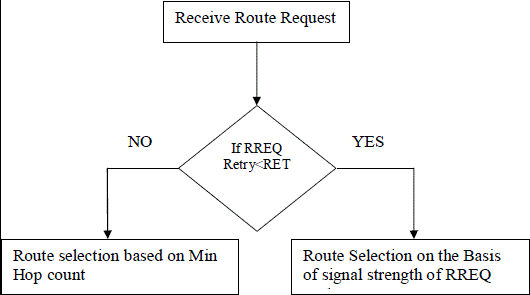 |
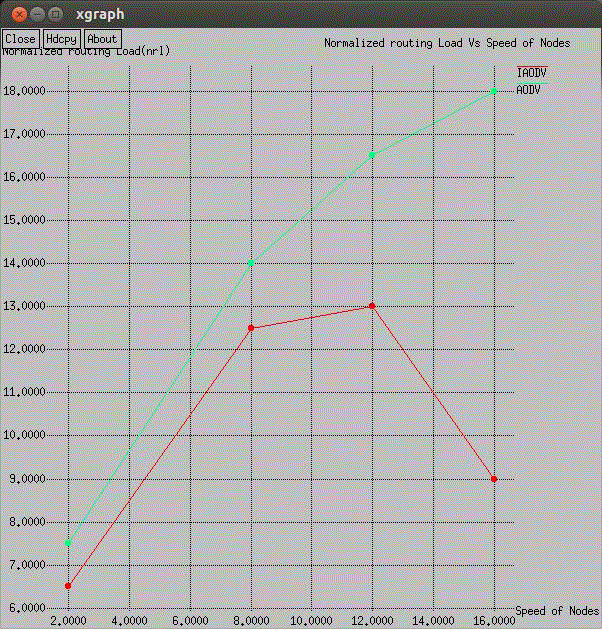 |
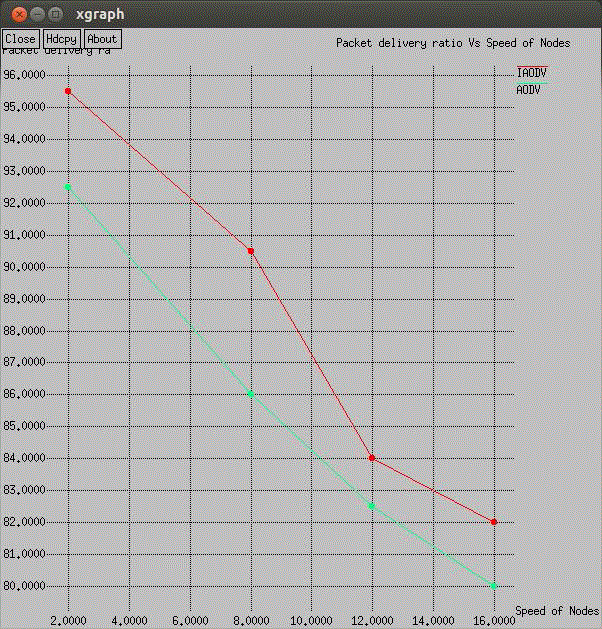 |
| Figure 1 |
Figure 2 |
Figure 3 |
|
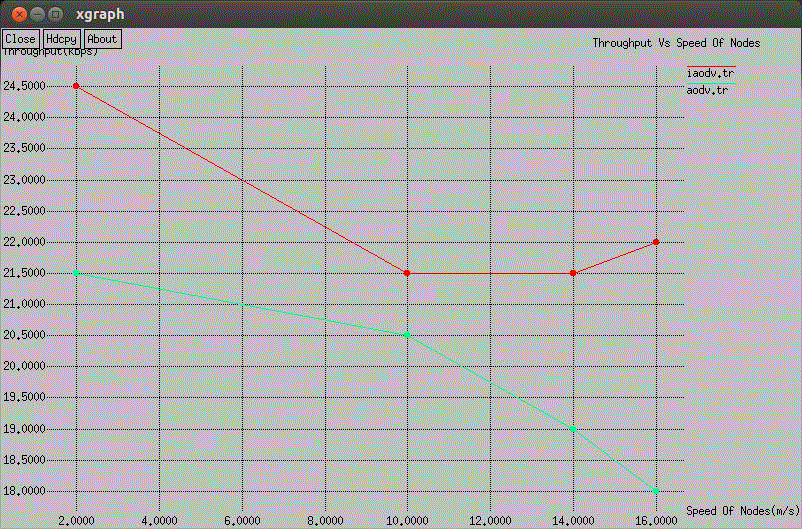 |
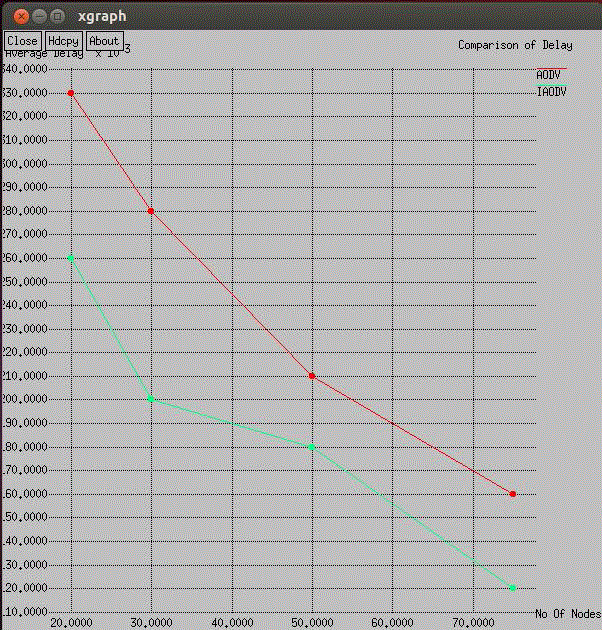 |
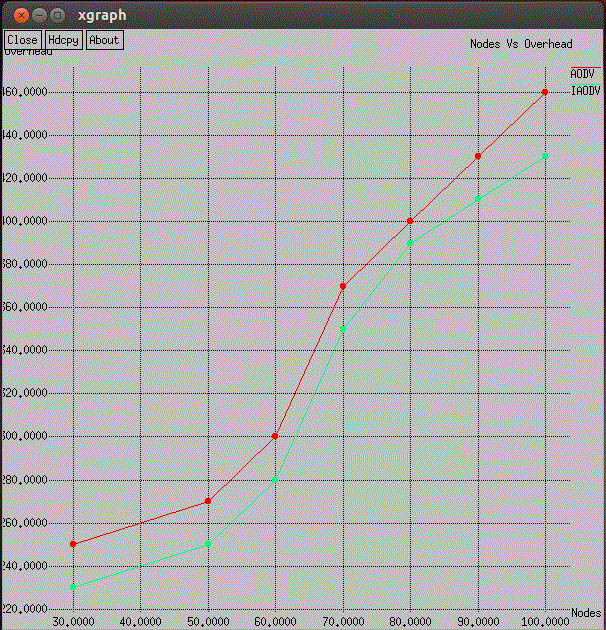 |
| Figure 4 |
Figure 5 |
Figure 6 |
|
| |
References
|
- C.-K. Toh, Ad Hoc Mobile Wireless Networks: Protocols and Systems, Prentice Hall, 2002.
- Charles E. Perkins, PravinBhagwat, Highly dynamic Destination- Sequenced Distance-Vector routing (DSDV) for mobile computers, in:Proceedings of the SIGCOMM' 94 Conference on Communications Architectures, Protocols and Applications, August 1994, pp.234-244. doi:10.1109/TENCON.2008.4766808J.
- Clerk Maxwell, ATreatise on Electricity and Magnetism, 3rd ed., vol. 2. Oxford: Clarendon, 1892, pp.68–73.
- D. B. Johnson, D. A. Maltz, and Josh Broch, “DSR: The Dynamic Source Routing Protocol for Multi-Hop Wireless Ad Hoc Networks”,in Ad Hoc Networking, edited by Charles E. Perkins, Chapter 5, pp. 139-172, Addison-Wesley, 2001.
- G.S. Tomar, “Position Based Routing algorithm For Mobile Ad Hoc Networks”, International Journal of Simulation- Systems, Scienceand Technology, Vol. 10, No.1, pp 10-15, Jan 2009.
- C. E. Perkins, “Ad hoc On Demand Distance Vector (AODV) Routing”,Internet Draft, draft-ietfmanet-aodv-01.txt, 1998.
- San-Yuan Wang; Jia-Yu Liu; Chun-Chien Huang; Mao-Yuan Kao; Yi-Ho Li; , "Signal strength-based routing protocol for mobile ad hocnetworks," Advanced Information Networking and Applications, 2005. AINA 2005. 19th International Conference on ,vol.2, no.,pp.17-20, vol.2, 28-30 March2005 doi: 0.1109/AINA.2005.311.
- JiwonPark; Moh, S.; Ilyong Chung; , "A multipath AODV routing protocol in mobile ad hoc networks with SINR-based route selection,"Wireless Communication Systems. 2008. ISWCS '08. IEEE International Symposium, vol., no., pp.682-686, 21-24 Oct. 2008doi:10.1109/ISWCS.2008.4726143.
|